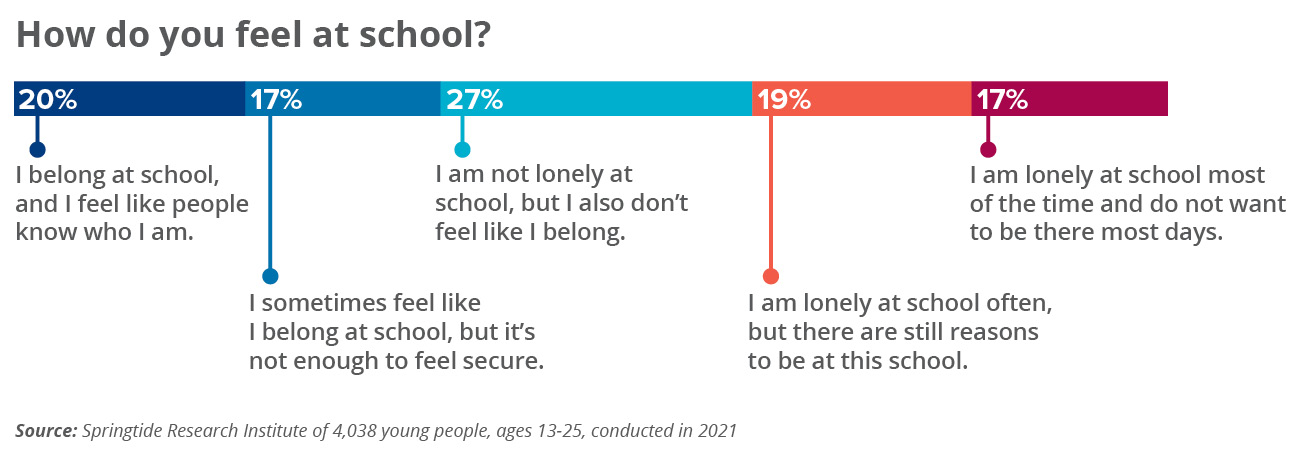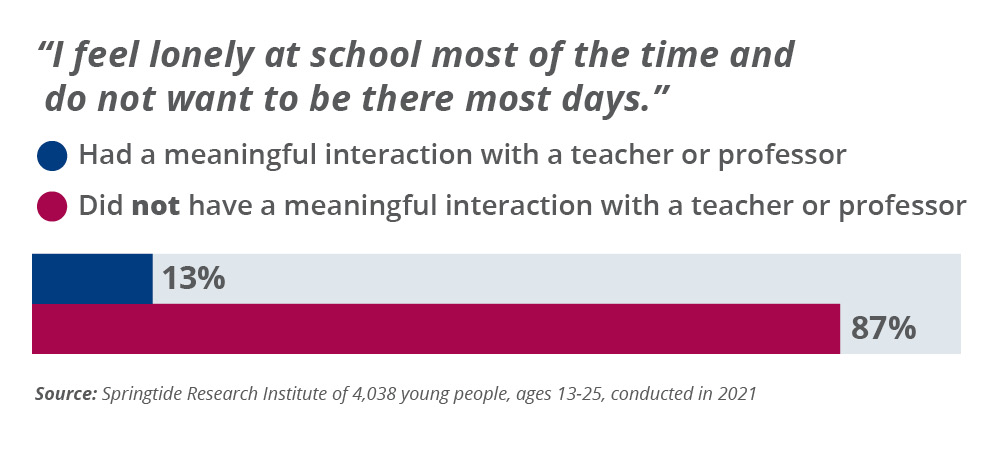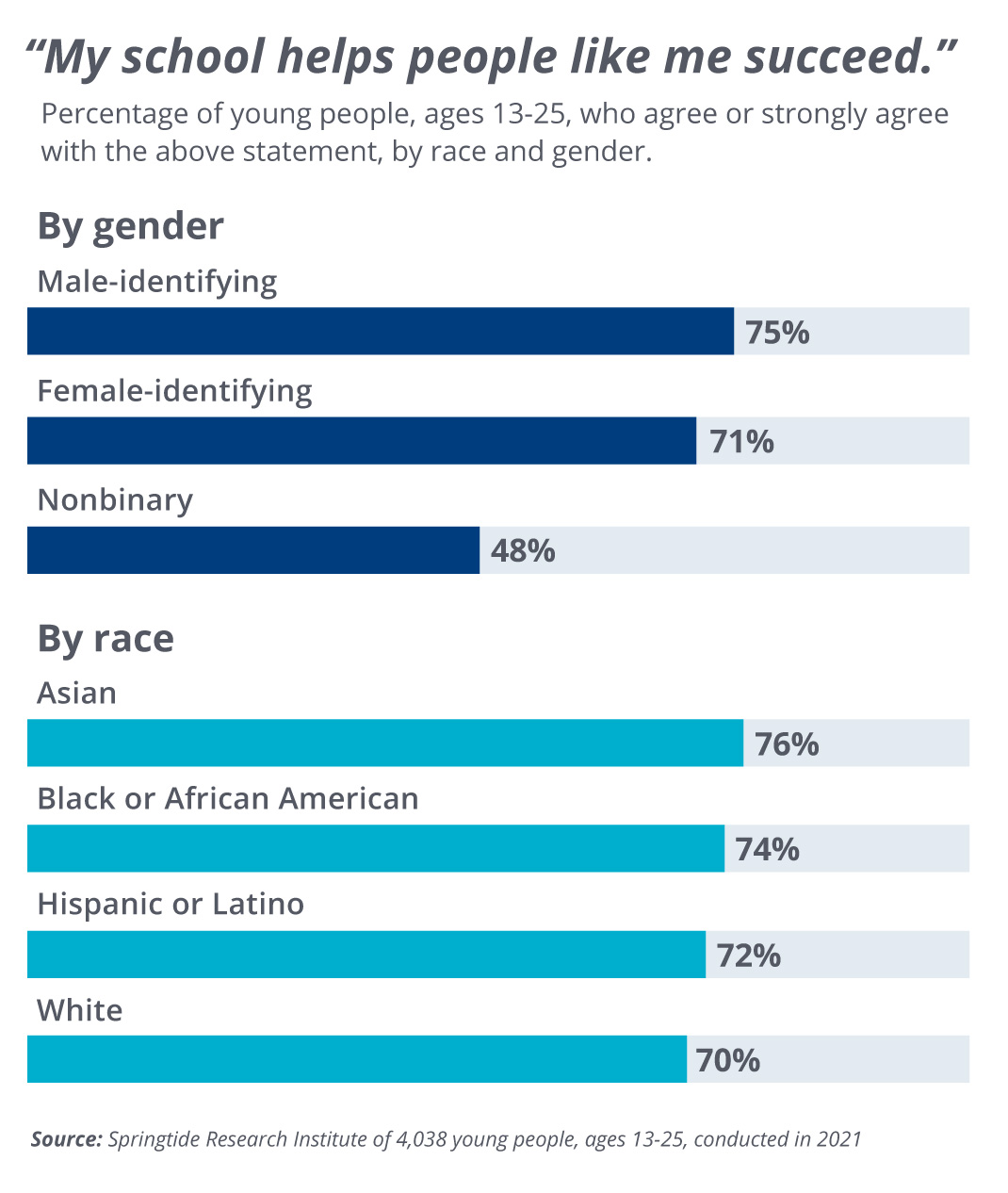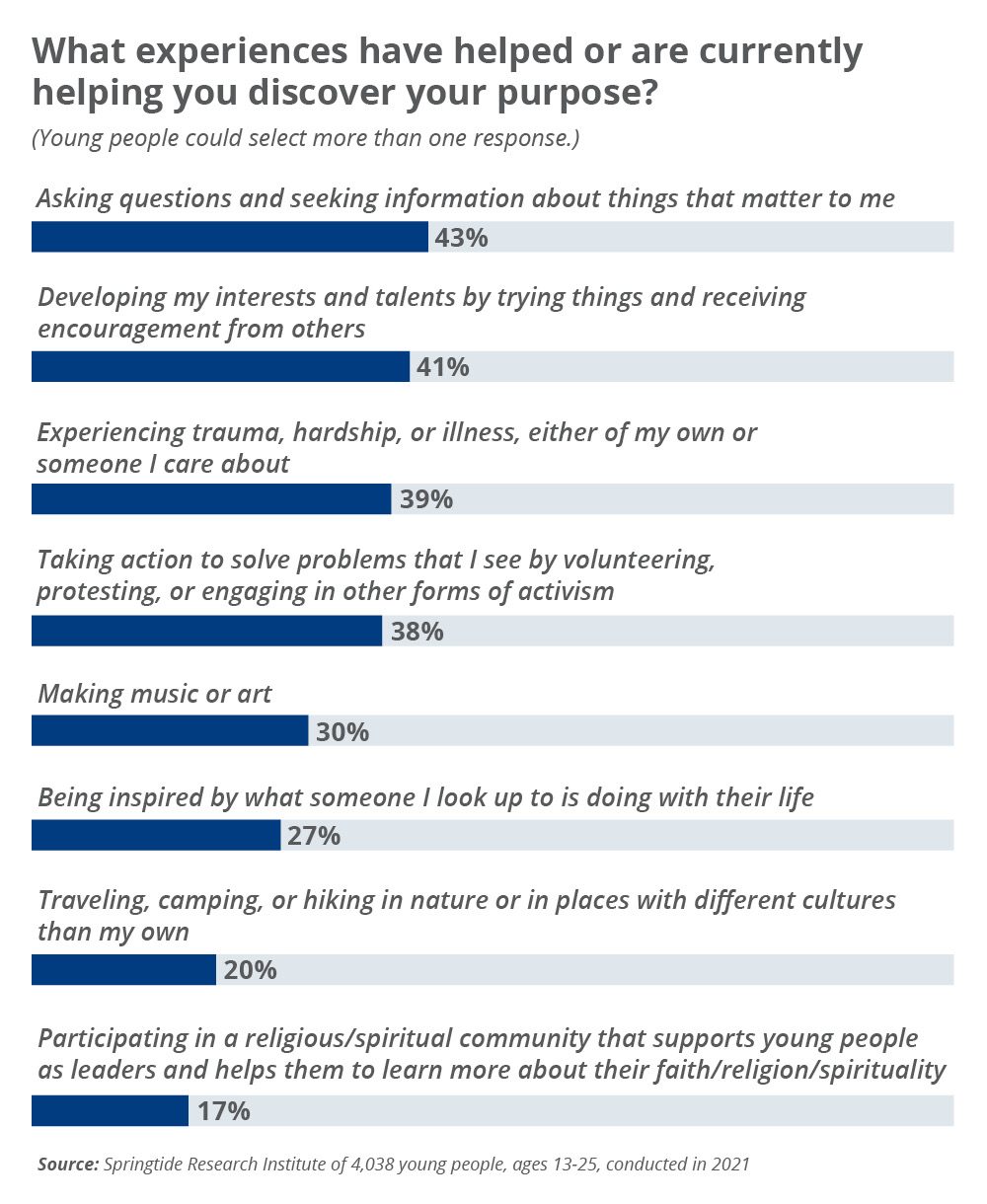How Schools Can Support Youth Mental Health
Young people spend most of their time in educational environments, and therefore school staff often serve as a first witness to their students’ mental health struggles. Schools and the trusted adults within them are uniquely positioned to create environments that strengthen young people’s mental health.
In the fall of 2021, Springtide Research Institute surveyed more than 4,000 young people ages 13-25, interviewed 80 more, and held a focus group with a classroom of 24 ninth graders to understand how young people experience and navigate their mental health in educational settings. In Mental Health and Gen Z: What Educators Need to Know, data show that while individual support is important, a communal focus on creating mental-health friendly environments can alleviate problems before they start.
Key Findings
-
Overall, schools succeed in helping students feel connected, yet many students don’t feel they belong.
A large majority of young people say they’re greeted and acknowledged by adults, but some students feel lonely or that there’s a lack of people they can trust at school. Young people of color are less likely to feel like they belong and are less known at school than White young people, though no group of young people say they feel they belong at high rates.

-
Teachers play a key role in students’ feelings of belonging.
Teachers play a key role in students’ feelings of belonging. Young people who say they have a meaningful interaction with a teacher or professor in a typical week report lower rates of loneliness, compared to those who do not have such interactions in a typical week. Eighty-seven percent of those who did not have those meaningful interactions say they’re lonely at school and do not want to be there.

-
Aligning expectations and the tools needed for success boosts student mental health.
Aligning expectations and the tools needed for success boosts student mental health. Data show that students of all races feel that their schools help those like them to succeed, which shows widespread efforts to shift resources and training to areas where they’re needed may be paying off. Yet, students on the margins may feel ill-equipped to meet expectations; the feeling of being left behind can adversely affect mental health.

-
Finding ways to encourage students’ autonomy and authenticity can help to connect to a sense of purpose, which bolsters mental health.
Students gain a greater sense of purpose through activities that encourage active engagement rather than passive participation. Also, teachers who tap into students’ interests, gifts, and talents can provide pathways for young people to find purpose.

You can purchase and access the full report, Mental Health and Gen Z: What Educators Need to Know here.






